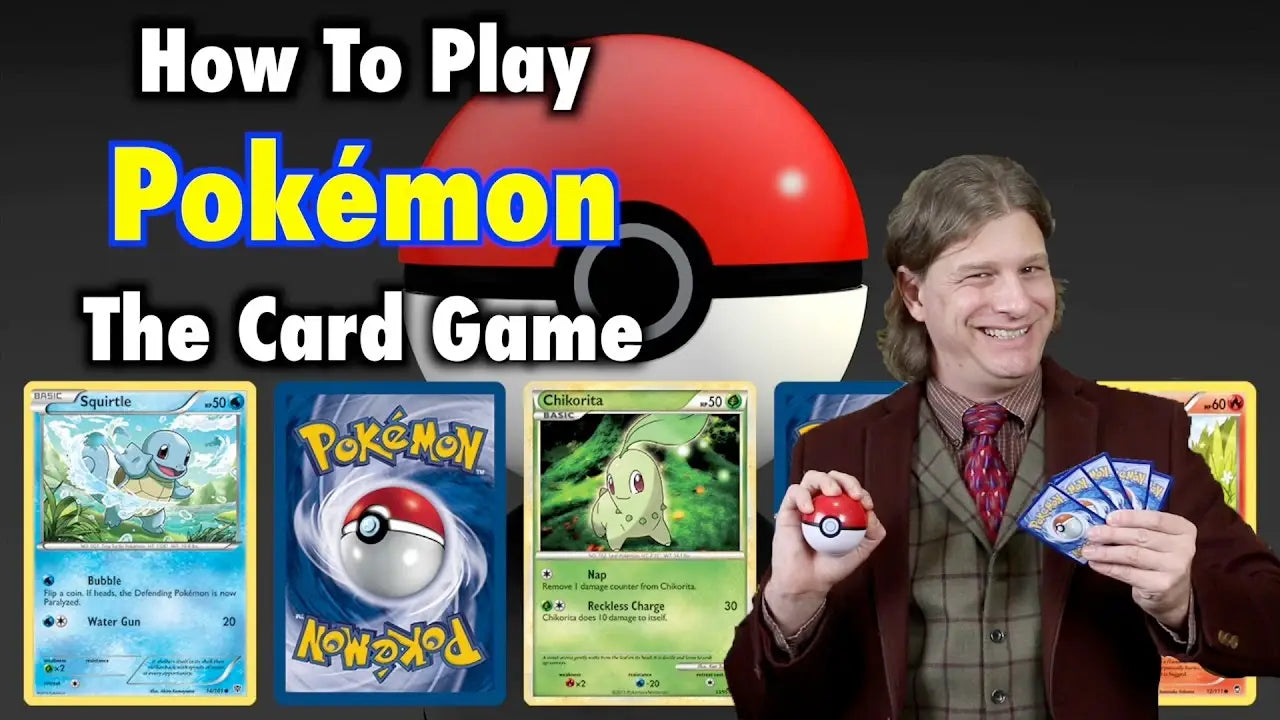
How To Play Pokemon Cards For Beginners?
Share
Are you ready to dive into the exhilarating world of Pokémon card battles? Whether you’re a seasoned trainer with epic strategies up your sleeve or a complete beginner just discovering this fascinating realm, learning how to play Pokémon cards is more than just a game—it's an electrifying adventure that will captivate your imagination and have you strategizing in no time. So, grab your deck filled with powerful Pokémon, and prepare to unleash their stunning abilities against rivals!
Pokémon cards have captivated the hearts of millions worldwide, creating a vibrant community united by a love for collecting, battling, and strategizing. With a dazzling array of colorful characters, intricate gameplay, and the thrill of uncovering rare cards, it's no wonder the Pokémon trading card game has blossomed into a global phenomenon. If you find yourself curious about this magical universe, fear not! This guide is your trusty roadmap, walking you through the essentials—from understanding the unique creatures on your cards to mastering the strategic art of card battles.
In this article, we’ll comprehensively break down the rules, advanced strategies, and vital tips to kickstart your Pokémon journey. Whether your goal is to become the ultimate Pokémon Master or simply engage in a fun and delightful pastime, we’ve got everything you need to get started. Let’s embark on this thrilling adventure together and discover how to play the Pokémon card game like a true professional!

How to Play Pokémon Cards for Beginners?
Welcome to the vibrant landscape of Pokémon cards! From novices to experienced players honing their techniques, this guide is crafted to familiarize you with the fundamentals of playing Pokémon cards. You’ll grasp the subtleties of various card types, internalize the rules governing gameplay, and be primed to leap headfirst into exhilarating battles. So, strap on your gear, gather your deck, and let’s begin!
Understanding the Types of Pokémon Cards
Before immersing yourself in the action-packed gameplay, it's essential to understand the distinctive types of Pokémon cards. There are three main types: Pokémon, Energy, and Trainer cards. Pokémon cards embody the creatures you’ll command in battles, Energy cards provide the necessary resources to unleash your Pokémon's attacks, and Trainer cards deliver various effects and tactical advantages. Each card boasts unique abilities and attributes, making building a well-rounded deck critical for success.
When constructing your deck, ensure it contains a balanced mix of Pokémon, Energy, and Trainer cards. This balance guarantees that you possess adequate resources to execute powerful strikes and fulfill your overall strategy. Experimenting with different combinations will help you identify a deck that aligns perfectly with your playstyle!
Learning the Rules of the Game
Now that you're familiar with the types of cards, let's dive into the core rules of the game. The goal of Pokémon cards is to defeat your opponent's Pokémon and claim Prize cards as trophies. Each player begins with a robust deck of 60 cards and starts the match by drawing seven cards as their opening hand. Remember, the player going first cannot unleash an attack during their initial turn.
On your turn, you can perform various actions: playing Pokémon cards, attaching Energy cards to power them up, employing Trainer cards for additional effects, and executing attacks. Each Pokémon has specific Energy requirements to unleash its powerful attacks; mastering the management of your Energy cards is vital for securing victories in battle. Be strategic and consider the possible ramifications prior to each move!
Order of Gameplay
Here is a step-by-step breakdown of the order of gameplay:
Tips for Successful Gameplay
To refine your gameplay and amplify your chances of triumph, consider these game-winning tips:
Benefits of Playing Pokémon Cards
Engaging in Pokémon card battles brings numerous benefits beyond mere enjoyment. Here are some of the rewards:
Where to Find Pokémon Cards
Now that you're well-equipped with the knowledge to navigate the enchanting world of Pokémon cards, you might wonder where to find them. One of the premier destinations for purchasing Pokémon cards is Vanity Slabs holders, famous for their top-notch trading card protection solutions while boasting a wide selection of Pokémon cards. Explore their website https://www.vanityslabs.com/ to browse their collection and kickstart your Pokémon card odyssey today!
Key Takeaways: How to Play Pokémon Cards for Beginners?
Frequently Asked Questions
Are you new to Pokémon cards and eager to understand the
